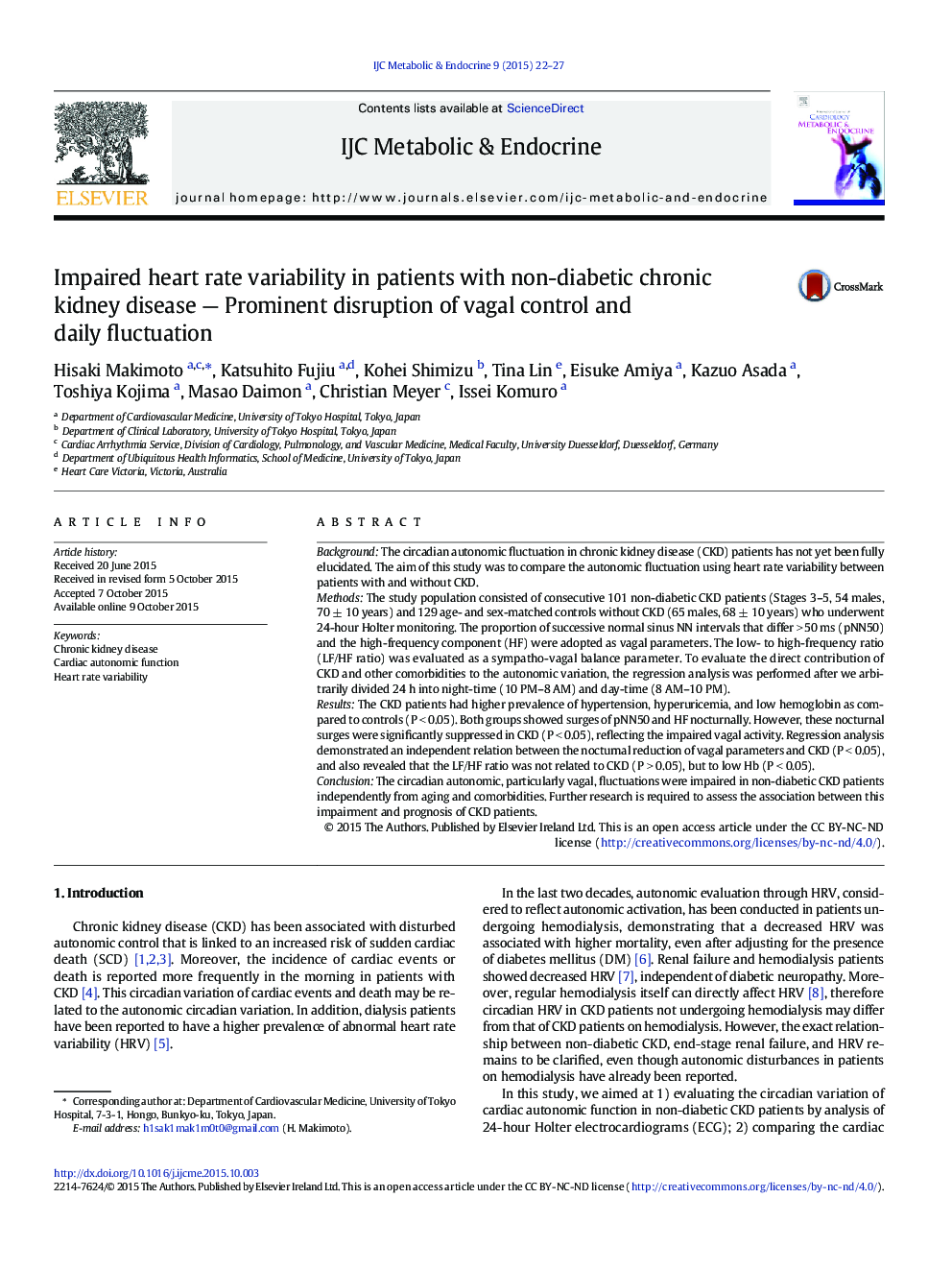| Article ID | Journal | Published Year | Pages | File Type |
|---|---|---|---|---|
| 2927194 | IJC Metabolic & Endocrine | 2015 | 6 Pages |
BackgroundThe circadian autonomic fluctuation in chronic kidney disease (CKD) patients has not yet been fully elucidated. The aim of this study was to compare the autonomic fluctuation using heart rate variability between patients with and without CKD.MethodsThe study population consisted of consecutive 101 non-diabetic CKD patients (Stages 3–5, 54 males, 70 ± 10 years) and 129 age- and sex-matched controls without CKD (65 males, 68 ± 10 years) who underwent 24-hour Holter monitoring. The proportion of successive normal sinus NN intervals that differ > 50 ms (pNN50) and the high-frequency component (HF) were adopted as vagal parameters. The low- to high-frequency ratio (LF/HF ratio) was evaluated as a sympatho-vagal balance parameter. To evaluate the direct contribution of CKD and other comorbidities to the autonomic variation, the regression analysis was performed after we arbitrarily divided 24 h into night-time (10 PM–8 AM) and day-time (8 AM–10 PM).ResultsThe CKD patients had higher prevalence of hypertension, hyperuricemia, and low hemoglobin as compared to controls (P < 0.05). Both groups showed surges of pNN50 and HF nocturnally. However, these nocturnal surges were significantly suppressed in CKD (P < 0.05), reflecting the impaired vagal activity. Regression analysis demonstrated an independent relation between the nocturnal reduction of vagal parameters and CKD (P < 0.05), and also revealed that the LF/HF ratio was not related to CKD (P > 0.05), but to low Hb (P < 0.05).ConclusionThe circadian autonomic, particularly vagal, fluctuations were impaired in non-diabetic CKD patients independently from aging and comorbidities. Further research is required to assess the association between this impairment and prognosis of CKD patients.
